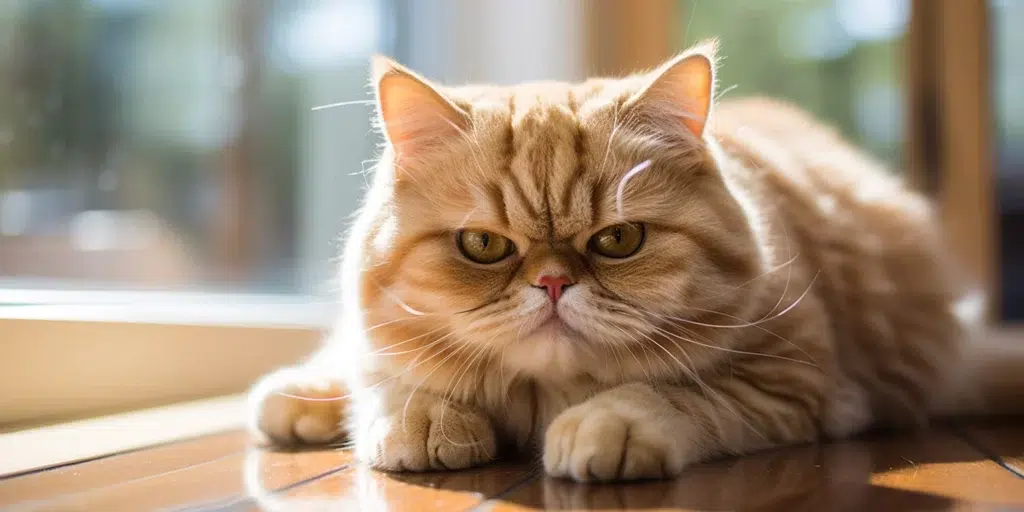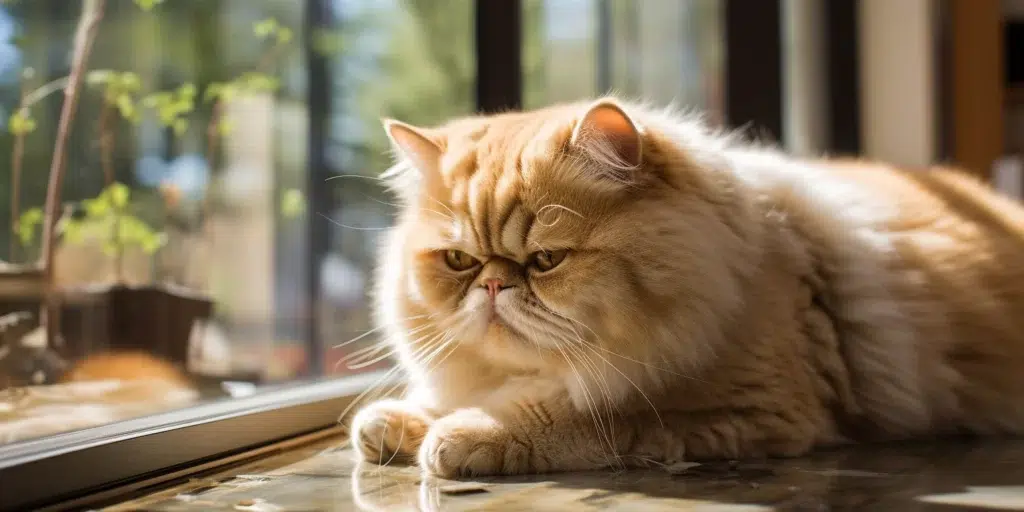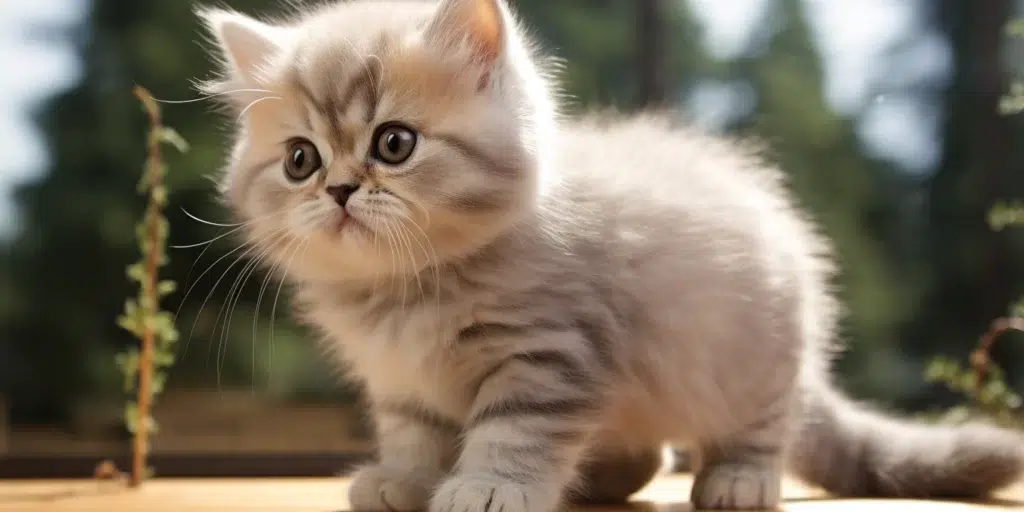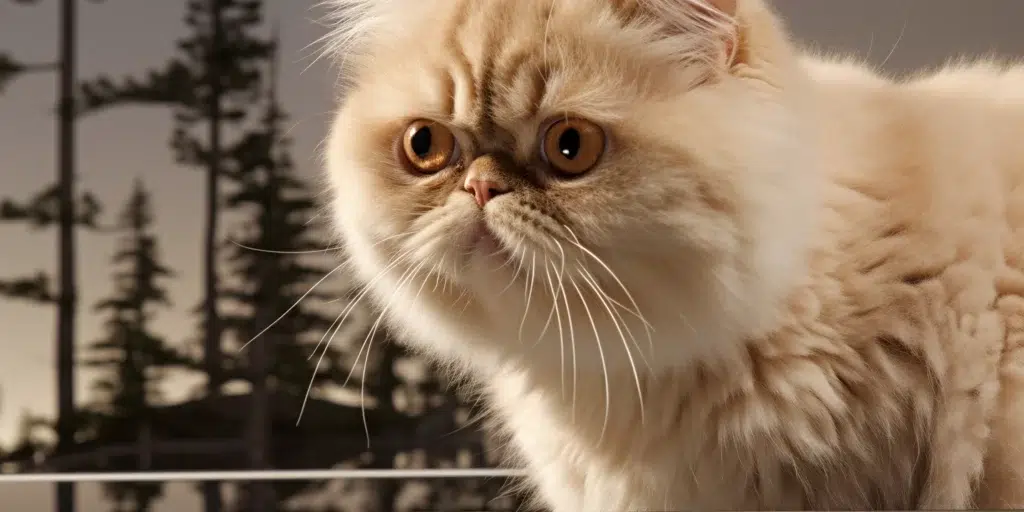Before choosing an Exotic Shorthair its best to understand the differences each gender have. Understanding the male vs female Exotic Shorthair nuances can be crucial for prospective cat owners to make an informed decision.
Both genders have their own charm and quirks that can significantly influence the dynamic of your household. In this comprehensive guide, we will compare males and female Exotic Shorthairs, with a focus on helping you determine which gender may be the best fit for your lifestyle.
Whether you’re drawn to the typically larger and more boisterous male Exotic Shorthairs or the smaller and sometimes more reserved females, this blog will provide you with insights into each gender’s physical characteristics, personality traits, and care requirements.
Our discussion on the Male vs Female Exotic Shorthair aims to set the stage for a caring and harmonious relationship with these lovable felines.

Visual Differences
| Characteristic | Male Exotic Shorthair | Female Exotic Shorthair |
|---|---|---|
| Average height (adult): | 10 – 12 inches | 10 – 12 inches |
| Average weight (adult): | 8 – 13 lbs | 6 – 12 lbs |
| Lifespan: | 8 – 15 years | 8 – 15 years |
| Energy Level: | Low | Low |
| Grooming needs: | High (due to dense coat) | High (due to dense coat) |
| Family-friendly: | Yes | Yes |
| Other pet-friendly: | Usually | Usually |
| Trainability: | Moderate/High | Moderate/High |
Male Breed Overview
Male Exotic Shorthairs are generally known for their larger stature and more playful demeanor. They tend to be quite affectionate, social, and enjoy engaging with their human companions. It is not uncommon for male Exotic Shorthairs to exhibit a more dominant personality when compared to their female counterparts.
This can be both an entertaining and a challenging trait, as they might be more assertive when seeking attention or during playtime.
Males of this breed also tend to be laid back but can have bursts of energy which they like to release through interactive play. Providing adequate stimulation through toys and interaction is important to keep them both physically and mentally healthy.
Their affectionate nature means they often get along well with children and other pets, assuming proper socialization has taken place.

Training A Male
Training a male Exotic Shorthair can be an enjoyable process because of their generally outgoing and playful nature.
They respond well to positive reinforcement techniques such as treats and praise. Consistency is key when training any cat, and it’s no different with a male Exotic Shorthair.
Setting clear boundaries while allowing them space to expend their energy is beneficial.
Health & Care
Male Exotic Shorthairs require attention to their grooming needs due to their dense coat. Regular brushing will help reduce shedding and prevent hairball issues. Like all cats, they should have regular veterinary check-ups.
Neutering can help mitigate some potential health concerns specific to male cats, such as spraying or prostate issues, and can often make them more easygoing.
Suitable for:
The male Exotic Shorthair is suitable for families looking for a sociable and sometimes goofy feline friend. Their larger size and occasionally boisterous behavior may suit homes with more space.
They’re generally good with kids and other pets, making them an adaptable companion for many kinds of families or individuals.

Female Breed Overview
Female Exotic Shorthairs are often slightly smaller in size than males but share the same lovable and round-faced features that the breed is known for. While still affectionate, they might display a more independent streak compared to males.
They can be quite thoughtful, observing their environment before diving into play or cuddles. Females tend to be somewhat calmer and may appreciate moments of tranquility throughout the day.
The female Exotic’s personality can be just as endearing as their male counterparts, though sometimes their affections may be on their terms. They bond deeply with their family members but might reserve their attention for quieter moments when they feel like being cuddly or playful.
Training A Female
Much like training a male Exotic Shorthair, females respond well to positive reinforcement but may require a bit more patience if they exhibit more independent traits.
They enjoy mental stimulation from puzzle feeders or interactive toys that challenge them. Keeping training sessions short and engaging will yield the best results with female Exotics.

Health & Care
Health and care considerations for female Exotic Shorthairs are paramount to ensuring their well-being and longevity. These cats are known for their dense, plush coats which require consistent grooming to prevent matting and reduce shedding.
Regular brushing sessions not only help manage their fur but also serve as an opportunity to strengthen the bond between pet and owner. Additionally, spaying female Exotic Shorthairs provides significant health advantages.
This procedure can greatly reduce the risk of ovarian and uterine cancers, which are common concerns in unspayed females. Furthermore, spaying eliminates the heat cycle, thereby mitigating related behaviors such as vocalization and restlessness, which can be stressful for both the cat and the owner.
Overall, attentive grooming combined with spaying forms a fundamental aspect of care for female Exotic Shorthairs, contributing to their health, happiness, and quality of life.
Suitable for:
The female Exotic Shorthair may be perfect for those who appreciate a somewhat quieter feline presence in their home.
They may be particularly suitable for smaller living spaces or environments that favor a cat with a blend of independent yet affectionate behavior.
Seniors or individuals with a more laid-back lifestyle might find females to be an excellent match.

Which One Is Right for You?
Choosing between a male or female Exotic Shorthair cat depends on your personal preferences, lifestyle, and what you’re looking for in a feline companion.
If you seek a larger, more playful pet that commands presence, a male might be your fit. On the other hand, if you prefer a pet that balances quietude with occasional affection, a female could be more suitable.
This decision also factors in some practicalities such as space in your home, existing pets, and how much time you are willing to devote to grooming and exercise sessions. Remember that individual personalities can vary widely within any breed; getting to know the cat before deciding is always advisable.

Conclusion
Whether you choose a male or female Exotic Shorthair, you’re welcoming an incredibly loving and attractive companion into your life. Both genders bring their own distinct blend of charm, charisma, and companionship to your daily routine.
While they share many breed-specific traits like their plush coats, distinctive faces, and friendly natures, the subtle differences between males and females could influence which is the right choice for your forever friend.
Understanding the Male vs Female Exotic Shorthair differences helps ensure that the cat you bring home will fit seamlessly into your household and lifestyle. Each will offer you love, countless moments of joy, and memorable companionship – after all, that’s what choosing a pet is all about.